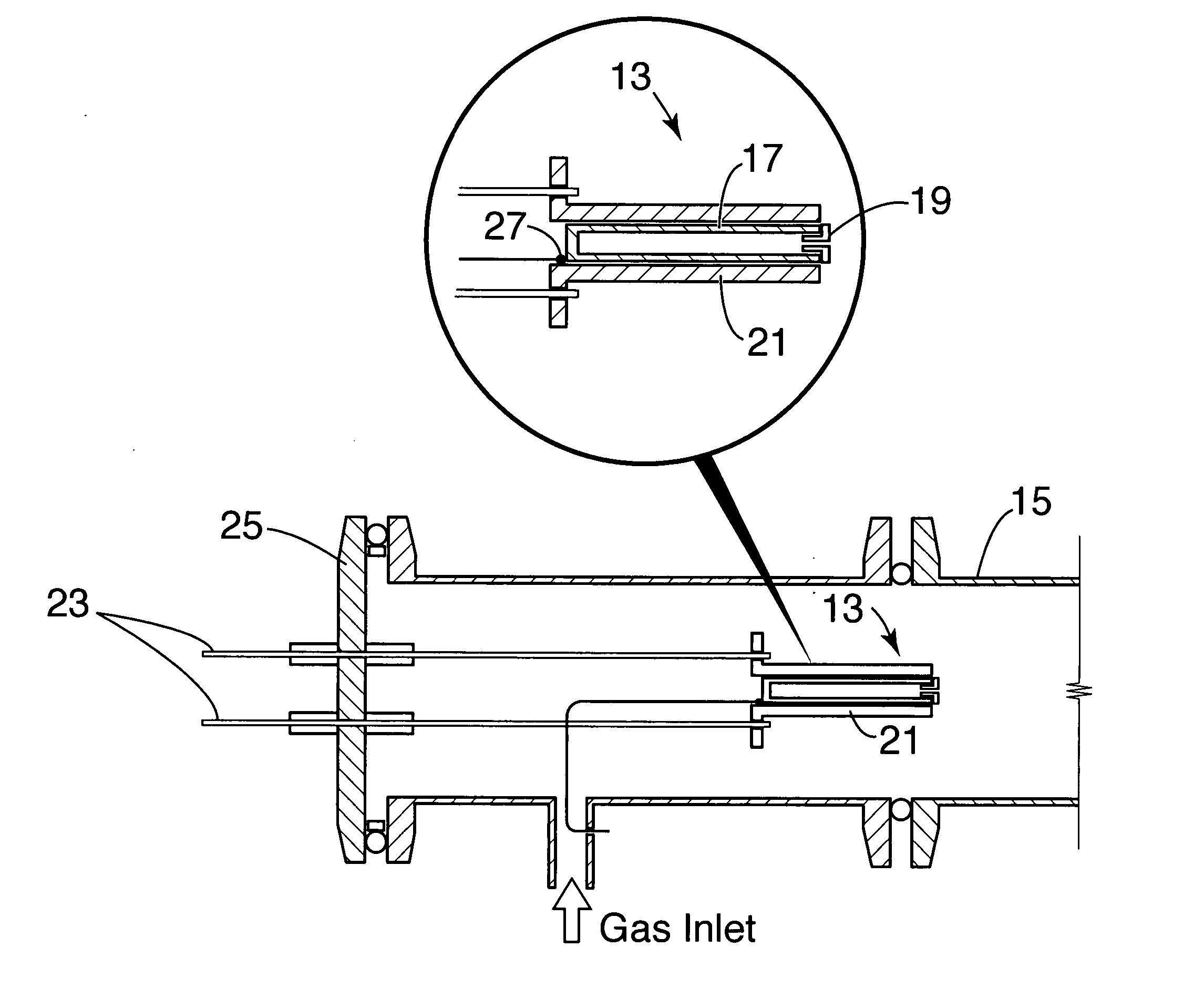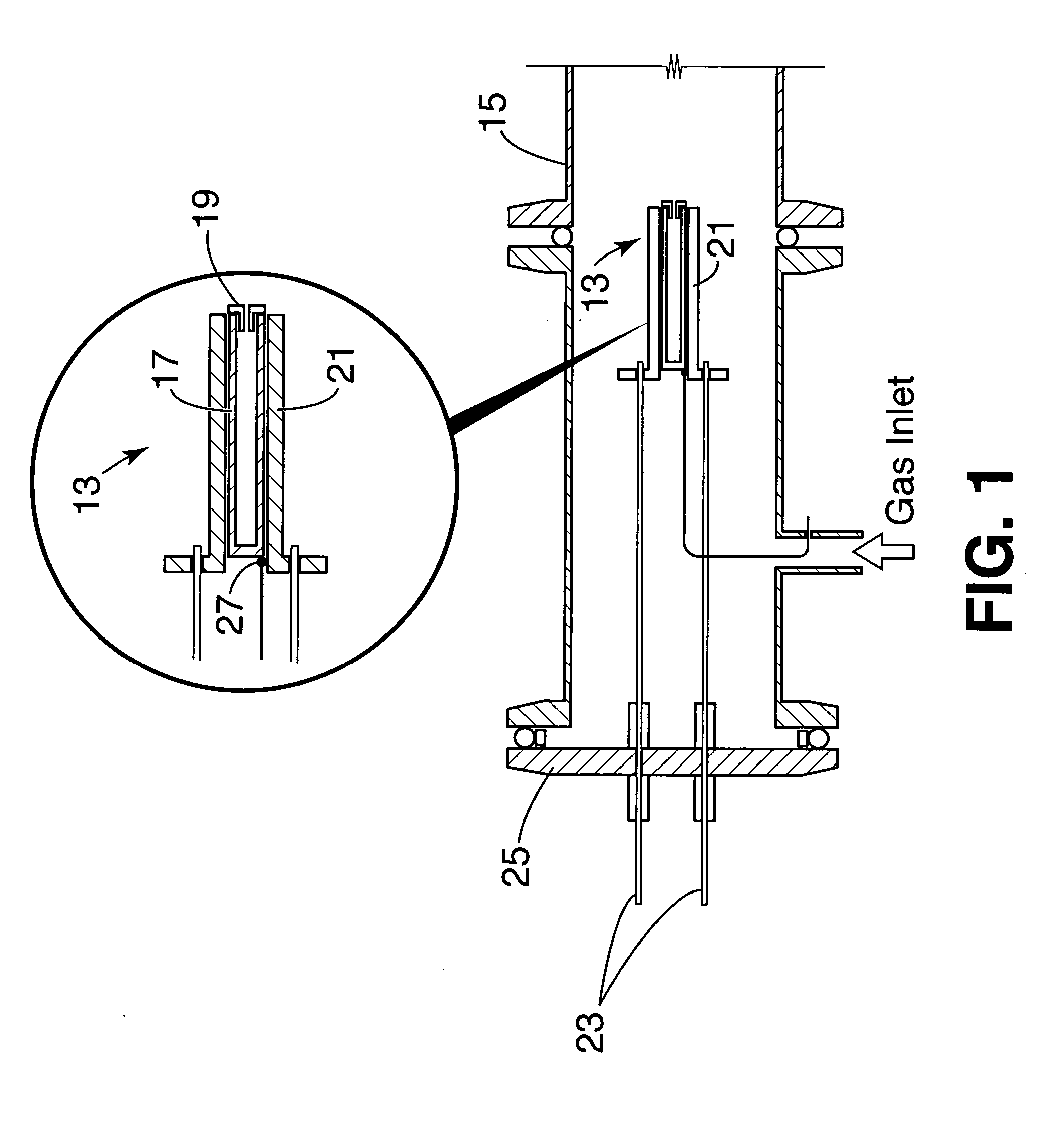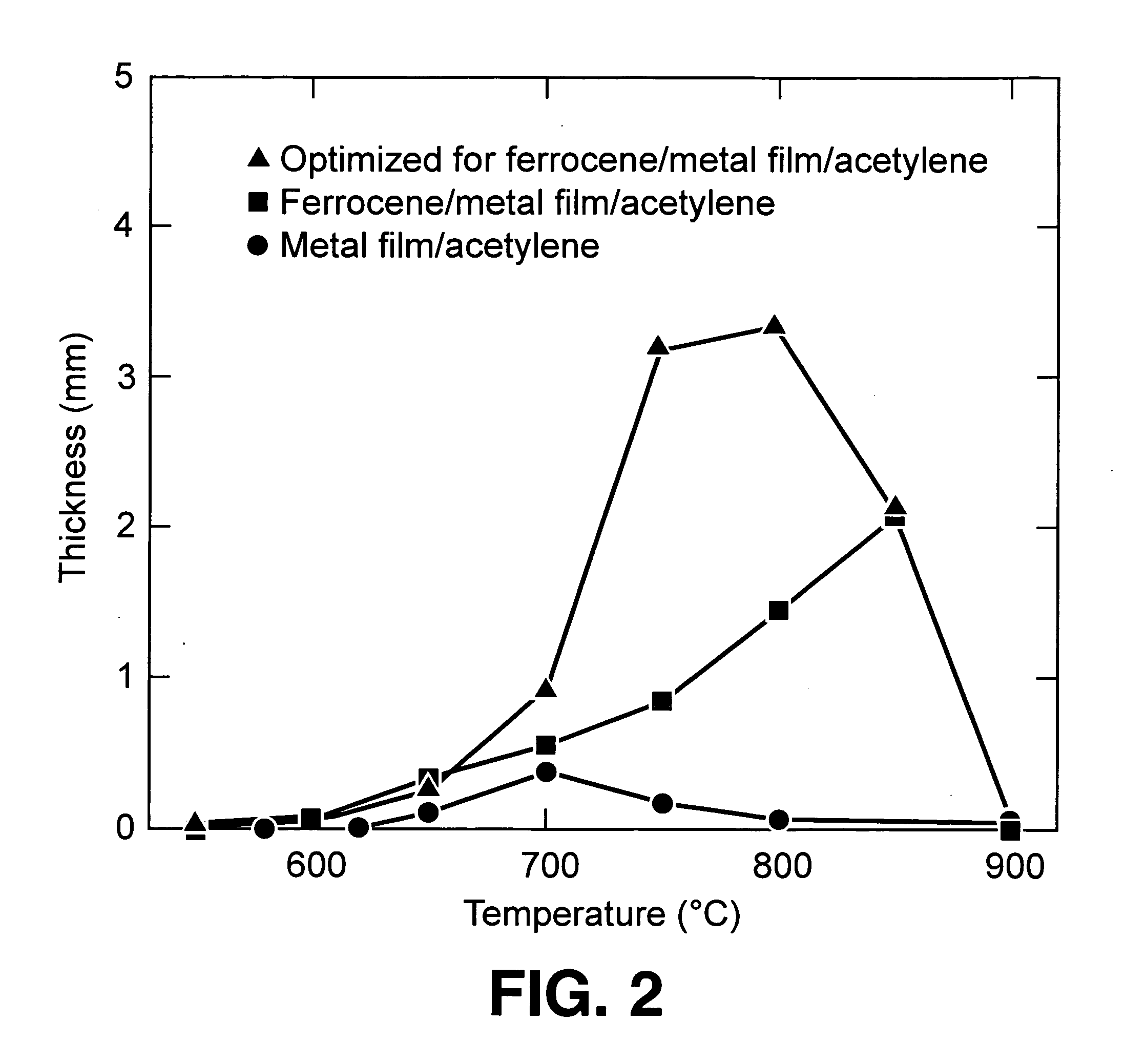Chemical vapor deposition of long vertically aligned dense carbon nanotube arrays by external control of catalyst composition
a technology of dense carbon nanotubes and catalysts, applied in vacuum evaporation coatings, chemical vapor deposition coatings, coatings, etc., can solve the problems of uncontrollable and cost effective growth methods for mass production of sufficiently pure cnts, widespread practical use of cnts, and undesirable side effects of cvd of cnts on al/fe/mo multilayer catalysts
- Summary
- Abstract
- Description
- Claims
- Application Information
AI Technical Summary
Benefits of technology
Problems solved by technology
Method used
Image
Examples
Embodiment Construction
[0030] A method providing extra Fe from an externally-controlled ferrocene source and changing the catalyst composition during a CNT growth process is described. The Fe precursor is ferrocene, an organometallic molecule that upon decomposition releases one Fe atom per each molecule. Decomposition of ferrocene is induced by the metal catalyst layer and is highly surface-specific and selective. Selectivity means that CNT growth occurs only on the areas where the catalyst layer is present. The Fe atoms released by decomposition of ferrocene catalyze the decomposition of acetylene and enhance the growth of VACNTs.
[0031]FIG. 1 illustrates the thermal evaporation source 13 for introducing ferrocene directly into the gas stream of a CVD CNT process. In FIG. 1, the ferrocene source 13 is located at the inlet 15 of a quartz tube furnace. The ferrocene is contained in a 0.22 in. diameter, 2 in. long tantalum cartridge 17. After being loaded with 200-300 mg of ferrocene, the open end of the c...
PUM
| Property | Measurement | Unit |
|---|---|---|
| Length | aaaaa | aaaaa |
| Length | aaaaa | aaaaa |
| Electrical conductor | aaaaa | aaaaa |
Abstract
Description
Claims
Application Information
 Login to View More
Login to View More - R&D
- Intellectual Property
- Life Sciences
- Materials
- Tech Scout
- Unparalleled Data Quality
- Higher Quality Content
- 60% Fewer Hallucinations
Browse by: Latest US Patents, China's latest patents, Technical Efficacy Thesaurus, Application Domain, Technology Topic, Popular Technical Reports.
© 2025 PatSnap. All rights reserved.Legal|Privacy policy|Modern Slavery Act Transparency Statement|Sitemap|About US| Contact US: help@patsnap.com



